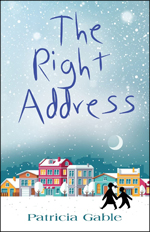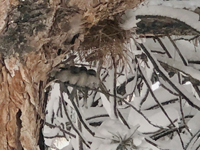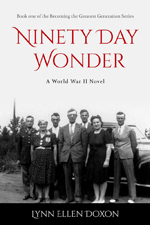RJ the Story Guy (aka RJ Mirabal) is a retired high school teacher turned author. He has written three series: the completed Rio Grande Parallax trilogy (adult fantasy) and the ongoing Dragon Train Quest for young adults and Trixie the Brown Dog for children. His newest release is Dragon Train Rebellion (December 2022), the second book in his Dragon Train Quest series. You’ll find RJ on his websites at RJMirabal.com and TrixieTheBrownDog.com, on Facebook at RJMirabalAuthor and TrixieTheBrownDog, and on Instagram and Twitter. To find out more about RJ and his writing, visit his SWW author page and follow the links to previous interviews.
 Distill the story you tell in Dragon Train Rebellion into a few sentences and include the themes you explore.
Distill the story you tell in Dragon Train Rebellion into a few sentences and include the themes you explore.
Rebellion takes up the story of Skye, the big blue dragon, and her human friend, young Jaiden the farmer, as they prepare themselves and the rest of the small community of free dragons to fight to stay free. In addition, they want to free all their fellow dragons who are enslaved. The dragons want to live once again in the mountain caves as they always had before humans won the Dragon Wars a generation before. Jaiden is captured when he tries to rescue Skye’s children who were abducted during a human raid on the free dragons’ desert community. Things come to a head which will lead to all-out war. The main themes of the story involve the quest for freedom, the importance of friendship and family relationships, and dedication to a cause.
Jaiden returns as your main character in book two. What challenges does he face, and why will readers connect with him?
Jaiden, who is now 17 years old, struggles to take on the responsibilities of adulthood and strives to offer himself to a cause greater than himself and that is, in fact, seemingly against his own kind—humanity. He encounters an attractive and very capable young woman a few years older than himself and a teenage girl whom he barely knew back in his hometown. The difficulty of relating to members of the opposite sex are mostly a mystery and somewhat frustrating for him. He also wants to gain independence from his demanding and mercurial father but he fears he isn’t capable of standing on his own feet until he is challenged by his new dragon friends.
Who are a few of your other characters, new or returning?
Skye and her mate Caerulus turned out to be rather demanding of Jaiden, though Skye still handles him with the compassion of a substitute mother, but she isn’t quite as supportive as he expected her to be based on his earlier experience with her.
A new character is a silver dragon (about the size of a horse with the intelligence of a ten-year-old child) called Trigger. He and Jaiden train together because when Jaiden goes into battle he will ride Trigger. Trigger is annoying and mischievous but also proves to be brave and humorous. The two start to bond by the end of the novel. Another new character is Dog, a small gold dragon about the size of a dog and the intelligence of a four-year-old child. Because of his size, he can easily sneak around to explore and help Jaiden once they start to work together with Trigger, Skye, and Caerulus.
Wyetta is a young woman, probably about three to four years older than Jaiden. She is very self-sufficient and athletic which makes her both attractive and threatening to Jaiden. Her beauty makes her irresistible to Jaiden, though there is a mysterious air about her.
You’re currently writing book three of Dragon Train Quest. At what point while working on the first book, Dragon Train, did you know the story was strong enough for a series? What has been the most challenging aspect of writing this series?
When I came to the end of the first book, I knew I had to tell the story of how Jaiden would get involved in the dragons’ quest for complete freedom. The freedom of Skye’s family that she and Jaiden accomplished at the end of the first book was fine, but it wouldn’t be enough for either of them to simply quit while they were ahead.
The most challenging aspect of writing this series is to limit the complexity because this is a story intended for teen and young adult readers. I could easily take this story into levels of complexity and a cast of characters as extensive as a major epic fantasy. But I wanted to keep the focus on Jaiden, Skye, and others closest to him as he goes through his whole coming of age quest. He is a part of a monumental struggle for freedom, but I didn’t want to bog the story down with a lot of politics and cultural theories. Though those elements are present, the story sticks to Jaiden and his quest since he is the narrator throughout, except for a few rare occasions.
What makes this series unique among all the other dragon books on the market?
Though there are a lot of dragon stories, most of them focus on people’s struggle with the dragons with usually the dragons as antagonists. Some stories allow dragons to be intelligent, but I decided to make them very intelligent, wise, and highly moral. They only want their own freedom, not to destroy humanity through death, destruction, and dominance. They do not have unusual magic abilities, but they communicate with Jaiden mentally. They have a highly developed culture but virtually no technology since they don’t possess hands and the more compact bodies of humans. I slowly reveal interesting elements of their highly developed culture as the story progresses. Also, the setting for the series is not medieval as is typical for many dragon stories. In this world (which I don’t name) people have developed a 19th-century kind of life and technology but they haven’t developed steam power, so they use dragons for heavy labor to do farm work and to tow trains, etc.
Did what-if questions help shape your Dragon Train books?
Yes, the unique aspects of the series mentioned above were the what-ifs I started with. In fact, the title came to me before any story ideas once I began thinking about developing a dragon story. Somehow, the words “dragon train” came to me one night when I was falling asleep. Later, intrigued by the idea, I imagined why dragons would pull trains and it all went from there, including the characters, storylines, etc.
What writing projects are you working on now?
Dragon Train War, which will conclude the Quest series, is this year’s project. It’s been the hardest to develop because I had to do a lot of research about war, battles, strategy, weapons, and battle techniques, as well as coming up with a satisfying conclusion that deals with the contradictions and horrors of war that will be comprehensible to young readers. And of course, I had a lot of storylines and character development that began in books one and two to contend with! Sometimes, a one-off book seems very appealing knowing that I don’t have to develop characters, storylines, and themes beyond the conclusion of one book.
Is there something else you’d like to tell readers?
Love and value freedom before you lose it. Value the people in your life and make the unique contribution to life as we know it that only you can do. Accept some failure and celebrate your successes. And remember, people (in broad enough terms to include the other intelligence forms of life we share this Earth with) and your relationships with them are the most important things.
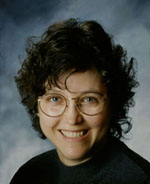 KL Wagoner (writing as Cate Macabe) is the author of This New Mountain: a memoir of AJ Jackson, private investigator, repossessor, and grandmother. Kat has a speculative fiction blog at klwagoner.com and writes about memoir at ThisNewMountain.com.
KL Wagoner (writing as Cate Macabe) is the author of This New Mountain: a memoir of AJ Jackson, private investigator, repossessor, and grandmother. Kat has a speculative fiction blog at klwagoner.com and writes about memoir at ThisNewMountain.com.




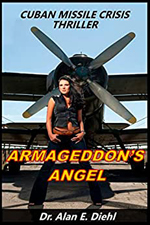
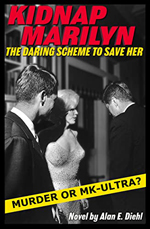
 Su Lierz writes dark fiction, short story fiction, and personal essays. Her short story “Twelve Days in April,” written under the pen name Laney Payne, appeared in the 2018 SouthWest Writers Sage Anthology. Su was a finalist in the 2017 and 2018 Albuquerque Museum Authors Festival Writing Contest. She lives in Corrales, New Mexico, with her husband Dennis.
Su Lierz writes dark fiction, short story fiction, and personal essays. Her short story “Twelve Days in April,” written under the pen name Laney Payne, appeared in the 2018 SouthWest Writers Sage Anthology. Su was a finalist in the 2017 and 2018 Albuquerque Museum Authors Festival Writing Contest. She lives in Corrales, New Mexico, with her husband Dennis.

